预计富氧燃烧技术市场规模将从 2024 年的 5.8989 亿美元增至 2031 年的 10.5623 亿美元。预计 2025 年至 2031 年期间该市场的复合年增长率 为8.94%。
富氧燃烧技术市场分析
碳捕获与储存的重要性日益提升,政府为减少空气污染而采取的举措和对环境法规的重视程度不断提升,以及高排放行业对脱碳的日益重视,都是推动市场增长的关键因素。此外,发达国家和发展中国家的空气污染意识提升项目以及发展中国家对空气质量日益增长的担忧,预计将在预测期内为市场带来丰厚的利润。
富氧燃烧技术市场概况
富氧燃烧技术已成为工业和能源生产领域的一种先进方法,其主要目的是满足日益增长的清洁能源解决方案和碳捕获需求。富氧燃烧技术通过在燃烧过程中用纯氧替代空气,显著减少氮氧化物 ( NOx ) 排放,并实现高效的二氧化碳 (CO2) 捕获,使其成为满足严格环境法规和应对气候变化的关键方法。世界各国政府都在制定严格的法规来限制温室气体 ( GHG ) 排放。
例如,欧盟的《大型燃烧装置指令》规定了污染物的排放限值,鼓励采用和实施富氧燃烧等技术。限额与交易制度和碳税等碳定价工具激励各行各业采用低碳技术,进而推动富氧燃烧技术市场的发展。
您可以免费定制任何报告,包括本报告的部分内容、国家级分析、Excel 数据包,以及为初创企业和大学提供优惠和折扣
富氧燃烧技术市场:战略洞察
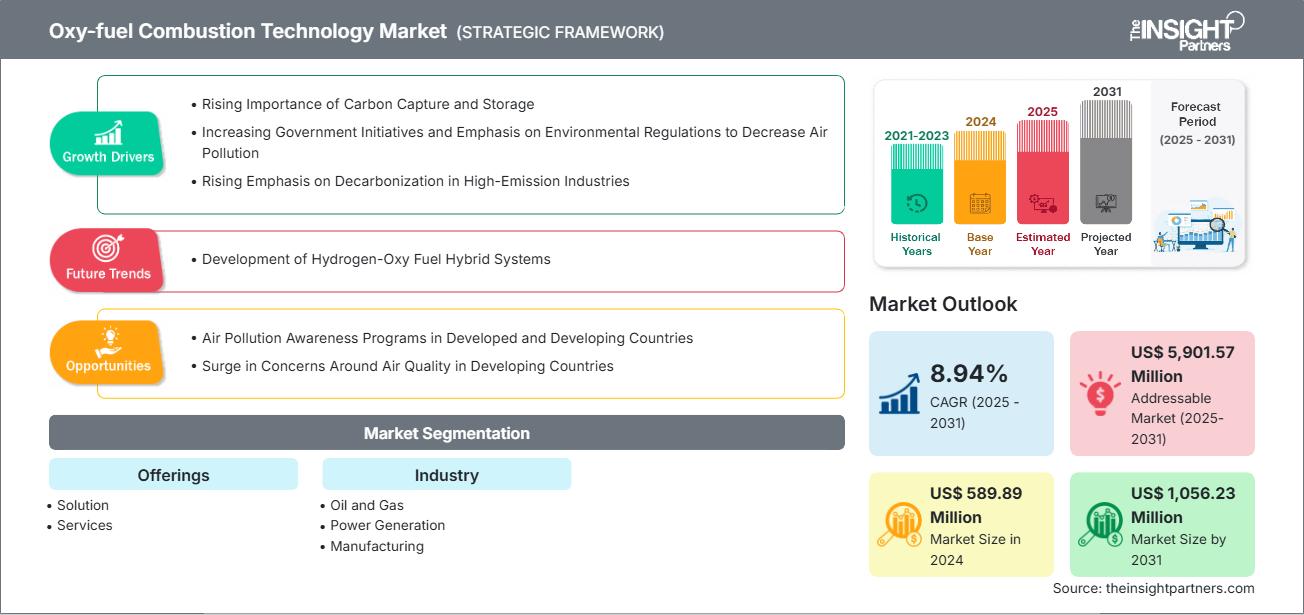
-
获取此报告的顶级关键市场趋势。此免费样品将包括数据分析,从市场趋势到估计和预测。
富氧燃烧技术市场驱动因素和机遇
市场驱动因素:
-
低排放技术需求不断增长
富氧燃烧通过产生富含二氧化碳的烟气实现接近零排放,符合全球脱碳目标和气候承诺。 -
工业界推动碳捕获
水泥、钢铁和化工等行业正在采用氧燃料系统来促进碳捕获并满足日益严格的排放法规。 -
技术进步
燃烧器设计、氧气生成和热回收系统的创新正在提高燃烧效率和系统可靠性。 -
能源效率和流程优化
富氧燃烧提高了热效率并降低了燃料消耗,对能源密集型工业过程具有吸引力。 -
政府支持政策和资金
北美和欧洲等地区对清洁技术的激励措施和试点项目正在加速富氧燃烧系统的采用。
市场机会:
-
与碳捕获和储存(CCS)的整合
氧燃料系统与 CCS 天然兼容,为工业和电力部门提供了实现净零排放的简化途径。 -
新兴市场的扩张
亚太、南美和非洲的工业化进程不断加快,为在新设施中部署富氧燃烧技术提供了机会。 -
氢与生物质的兼容性
可使用替代燃料的氧燃料系统的开发支持向可持续能源的过渡。 -
模块化和可扩展的解决方案
适用于小型到大型应用的可定制系统可实现跨不同行业的灵活部署。 -
战略合作与研发投资
与 OEM、公用事业和研究机构的合作正在推动创新并扩大市场范围。
富氧燃烧技术市场报告细分分析
为了更清晰地了解富氧燃烧技术市场运作方式、增长潜力和最新趋势,我们将富氧燃烧技术市场划分为不同的细分领域。以下是大多数行业报告中使用的标准细分方法:
按供品:
-
解决方案
富氧燃烧系统旨在使用纯氧而非空气,实现高效燃烧并简化二氧化碳捕集。这些系统是寻求减少排放和提高热性能的行业的理想选择。解决方案还包括专为工业和电力应用量身定制的制氧装置和集成碳捕集模块。
-
服务
服务涵盖富氧燃烧系统的安装、调试、维护和改造。咨询和可行性研究帮助各行业评估向富氧燃烧的转型。培训和远程支持确保安全优化的运行。这些服务对于长期性能和法规合规性至关重要。
按行业:
-
石油和天然气
富氧燃烧用于炼油和提高石油采收率 (EOR) 作业。它支持高温工艺,并有助于二氧化碳的再利用或封存。该技术在旨在减少碳足迹的上游和下游领域正日益受到青睐。
-
发电
发电厂使用富氧燃烧系统改造现有的燃煤或燃气机组,以降低排放。该技术兼容碳捕获,并支持基荷发电。在环境法规严格、脱碳目标明确的地区,富氧燃烧系统的应用日益广泛。
-
制造业
化工、陶瓷和食品加工等行业受益于富氧燃烧,能够持续输送热量并降低燃料消耗。该技术能够提高能源效率,并支持更清洁的生产流程。
-
金属与采矿
全氧燃烧系统应用于冶炼、精炼和金属处理。该系统燃烧更清洁,温度分布更可控,适合钢铁和有色金属行业的高强度作业。
-
其他的
其他应用包括玻璃制造、废物处理和学术研究。这些领域之所以使用富氧燃烧,是因为其精确度高、效率高,并且与实验装置或专业工业需求兼容。
按地域划分:
- 北美
- 欧洲
- 亚太地区
- 拉美
- 中东和非洲
亚太地区的富氧燃烧技术市场预计将出现最快的增长。
富氧燃烧技术市场区域洞察
Insight Partners 的分析师已详尽阐述了预测期内影响富氧燃烧技术市场的区域趋势和因素。本节还讨论了北美、欧洲、亚太地区、中东和非洲以及南美和中美洲的富氧燃烧技术市场细分和地域分布。
富氧燃烧技术市场报告范围
| 报告属性 | 细节 |
|---|---|
| 2024年的市场规模 | 5.8989亿美元 |
| 2031年的市场规模 | 10.5623亿美元 |
| 全球复合年增长率(2025-2031) | 8.94% |
| 史料 | 2021-2023 |
| 预测期 | 2025-2031 |
| 涵盖的领域 |
按奉献
|
| 覆盖地区和国家 |
北美
|
| 市场领导者和主要公司简介 |
|
富氧燃烧技术市场参与者密度:了解其对业务动态的影响
富氧燃烧技术市场正在快速增长,这得益于终端用户需求的不断增长,而这些需求的驱动因素包括消费者偏好的演变、技术进步以及对产品优势的认知度的提升。随着需求的增长,企业正在扩展产品线,不断创新以满足消费者需求,并抓住新兴趋势,从而进一步推动市场增长。
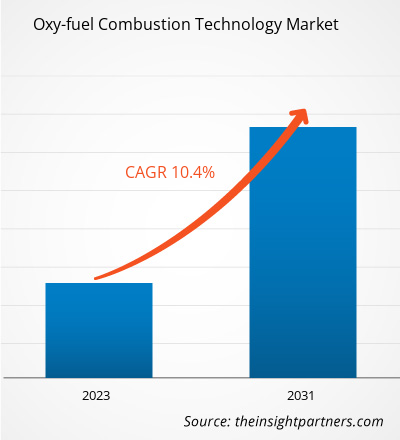
- 获取富氧燃烧技术市场主要参与者概览
富氧燃烧技术市场份额(按地区)分析
富氧燃烧技术市场主要分为五大区域:北美、欧洲、亚太地区 (APAC)、中东和非洲 (MEA) 以及南美 (SAM)。2024 年,北美占据市场主导地位,其次是欧洲和亚太地区。
北美富氧燃烧技术市场受到严格的环境法规和强劲的工业基础驱动。美国环境保护署 (EPA) 的排放法规鼓励采用更清洁的技术。
美国和加拿大等国家是全球主要有毒气体排放国,因为它们严重依赖化石燃料来满足其一次能源需求。考虑到《巴黎协定》雄心勃勃且必要的气候目标,加快美国的经济脱碳计划至关重要。由于美国正在重新努力制定支持性政策并强化现有政策框架,因此在富氧燃烧技术的商业化方面处于有利地位。预计这些技术将在未来几年成为全球经济脱碳的广泛需求。
以下是各地区市场份额和趋势的摘要:
1. 北美
-
市场份额:
由于早期采用和 CCS 计划而表现强劲。 -
驱动程序:
美国能源部支持的研究、改造燃煤电厂和工业脱碳。 -
趋势:
与氢和生物质燃料的结合。
2.欧洲
-
市场份额:
创新引领、政策扶持。 -
驱动程序:
欧盟气候目标、碳定价和工业排放法规。 -
趋势:
注重循环经济和绿色钢铁生产。
3. 亚太地区
-
市场份额:
因工业扩张而快速增长。 -
驱动程序:
不断增长的能源需求、污染控制要求和政府激励措施。 -
趋势:
水泥和玻璃行业的采用。
4.中东和非洲
-
市场份额:
新兴领域,在石油天然气和海水淡化方面有潜力。 -
驱动程序:
能源多样化、CCS 利益和基础设施发展。 -
趋势:
用于石化和炼油工业。
5.南美洲
-
市场份额:
正在发展,重点是工业改造。 -
驱动程序:
气候承诺、能源效率目标和国际资金。 -
趋势:
水泥与生物质混烧试点项目。
富氧燃烧技术市场参与者密度:了解其对业务动态的影响
中等市场密度和竞争
由于 Falorni Gianfranco SRL、Heidelberg Materials AG、Jupiter Oxygen Corp、Linde Plc 和 L'Air Liquide SA 等老牌企业的存在,竞争处于中等水平,也加剧了不同地区的竞争格局。
这种激烈的竞争促使公司通过提供以下产品脱颖而出:
- 多样化的产品类型和材料满足了不同的消费者需求,从而加剧了竞争。
- 较低的进入门槛允许许多小型和区域性参与者进入市场。
- 定制化需求推动品牌不断创新、差异化。
- 全球和本地制造商的强大影响力加剧了价格和功能竞争。
- 工业增长使得直接面向消费者的销售成为可能,从而增加了市场饱和度。
- 富氧燃烧技术的技术进步。
- 对价格敏感的消费者会推动积极的定价和促销策略。
机遇与战略举措
-
与 CCS 智能集成
将氧燃料系统与碳捕获相结合,实现接近零排放。 -
环保燃料改造
支持使用氢、生物质和合成燃料。 -
模块化和定制设计
针对特定工业需求和改造定制系统。 -
新兴市场的扩张
挖掘亚太、非洲和南美洲的需求。 -
数字销售和远程监控
使用在线平台进行诊断、配置和支持。 -
灵活的所有权模式
提供租赁、按使用付费和基于绩效的合同。 -
产品创新
投资燃烧器设计、氧气生成和热回收。 -
战略合作伙伴关系
与 OEM、公用事业和环境技术公司合作。
在富氧燃烧技术市场运营的主要公司有:
- 液化空气集团
- 林德公司
- 空气产品和化学品公司
- 木星氧气公司
- 精密燃烧公司
- 法孚集团
- 巴布科克和威尔科克斯企业有限公司
- 海德堡材料
- Falorni Tech srl
- 梅塞尔北美公司
免责声明:以上列出的公司没有按照任何特定顺序排列。
研究过程中分析的其他公司:
- 北京北大先锋科技股份有限公司
- 日本气体
- 清洁能源系统
- 特里根能源
- ENCON热力工程师
- Nebb(挪威语)
- ESA Pyronics
富氧燃烧技术市场新闻及最新发展
-
林德与蓝点一号签署新协议
林德(纳斯达克股票代码:LIN)宣布,已与CF工业公司、JERA和三井物产的合资公司Blue Point Number One签署了一项新的长期协议。根据协议条款,林德将向Blue Point位于路易斯安那州阿森松县的140万吨低碳氨工厂供应工业气体。林德将建造、拥有并运营一套世界级的空气分离装置(ASU),为Blue Point项目供应氧气和氮气。该项目预计将成为全球最大的低碳氨项目之一。林德将为这座预计于2029年投产的新工厂投资超过4亿美元。(来源:林德公司,新闻稿,2025年6月)
-
Babcock & Wilcox 与 Kiewit Industrial 合作
Babcock & Wilcox 与 Kiewit Industrial 合作,为 Fidelis New Energy 开发并交付全球最大的净负二氧化碳生物质能发电设施,该设施采用 B&W 的先进生物质能和专有的 OxyBright™ 碳捕集技术。(来源:Babcock & Wilcox Enterprises Inc,新闻稿,2022 年 3 月)
富氧燃烧技术市场报告覆盖范围和交付成果
《富氧燃烧技术市场规模和预测(2021-2031)》报告对以下领域进行了详细的市场分析:
- 富氧燃烧技术市场规模及全球、区域和国家层面所有关键细分市场的预测
- 富氧燃烧技术市场趋势,以及驱动因素、限制因素和关键机遇等市场动态
- 详细的 PEST 和 SWOT 分析
- 富氧燃烧技术市场分析涵盖主要市场趋势、全球和区域框架、主要参与者、法规和最新市场发展
- 行业格局和竞争分析,涵盖市场集中度、热图分析、知名参与者以及富氧燃烧技术市场的最新发展
- 详细的公司简介
- 历史分析(2 年)、基准年、预测(7 年)及复合年增长率
- PEST和SWOT分析
- 市场规模、价值/数量 - 全球、区域、国家
- 行业和竞争格局
- Excel 数据集
近期报告
客户评价
购买理由
- 明智的决策
- 了解市场动态
- 竞争分析
- 客户洞察
- 市场预测
- 风险规避
- 战略规划
- 投资论证
- 识别新兴市场
- 优化营销策略
- 提升运营效率
- 顺应监管趋势












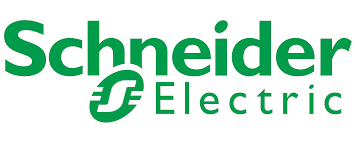


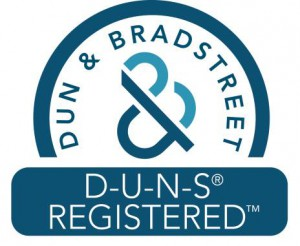
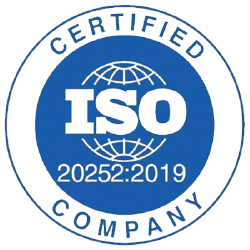





 获取免费样品 - 富氧燃烧技术市场
获取免费样品 - 富氧燃烧技术市场